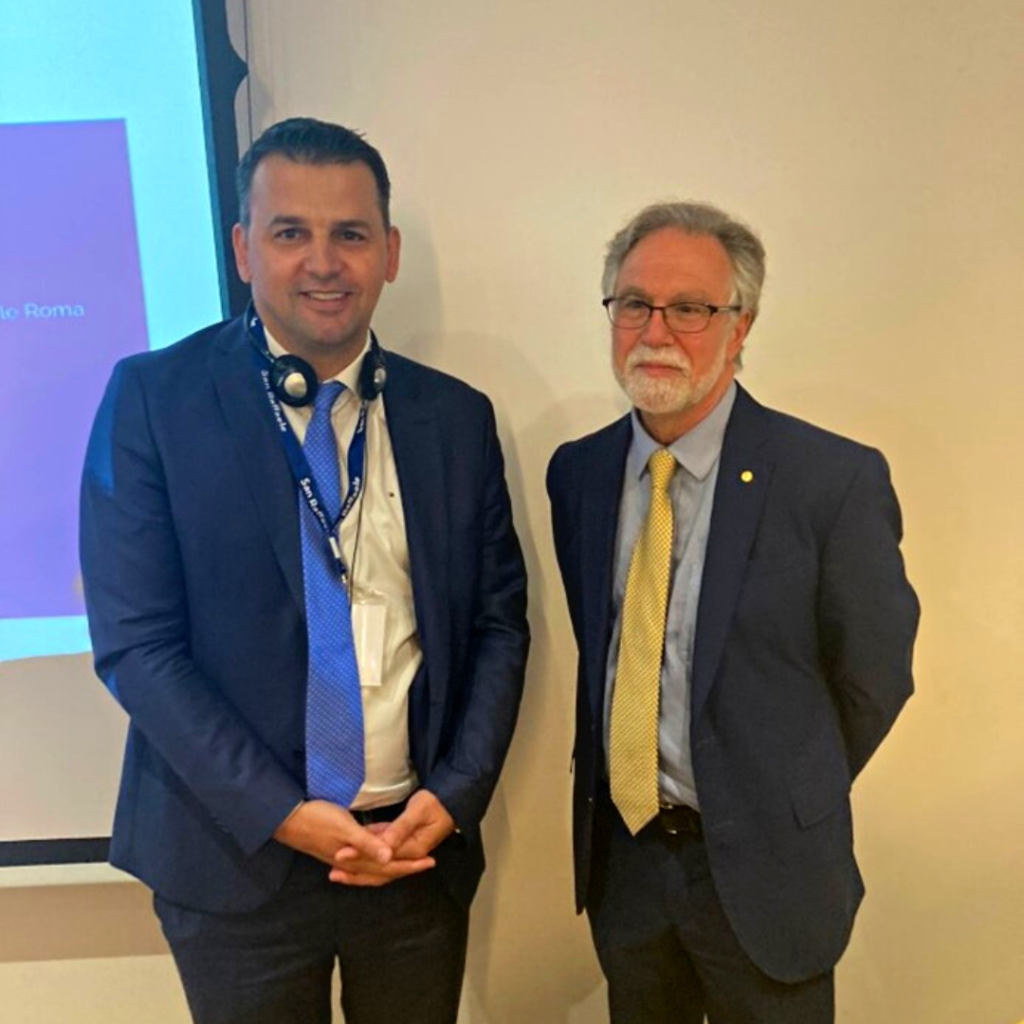
SSBM professor Dario Silic met with professor Gregg L. Semenza during the visit of SBS school in Rome, Italy, when the new cooperation agreement between SBS and SSBM Geneva was officially announced in front of high guests such as Mrs Maria Elisabetta Alberti Casellati, President of Senate of Republic of Italy. Prof Dario Silic was honoured to represent SSBM Geneva and to have a possibility to discuss different topics with 2019 Nobel recipient in Physiology or Medicine 2019 “for discoveries of how cells sense and adapt to oxygen availability”.
After studying medical genetics at Harvard University, professor Semenza pursued doctoral studies at the University of Pennsylvania in Philadelphia, receiving his doctorate there in 1984. After completing his pediatric training, he began working at Johns Hopkins University in Baltimore, Maryland, where he is still active.
Dr. Gregg L. Semenza is a professor of genetic medicine, pediatrics, radiation oncology, and molecular radiation sciences, biological chemistry, medicine, and oncology at the Johns Hopkins University School of Medicine. One of today’s preeminent researchers on the molecular mechanisms of oxygen regulation, Dr. Semenza has led the field in uncovering how cells adapt to changing oxygen levels. He is best known for his ground-breaking discovery of the HIF-1 (hypoxia-inducible factor 1) protein, which controls changes in gene expression in response to changes in oxygen availability. The discovery of HIF-1 has far-reaching implications for understanding and treating conditions, such as cancer and ischemic cardiovascular disease, in which hypoxia plays an important role in disease pathogenesis.
The importance of oxygen has been understood for centuries, but how cells adapt to changes in levels of oxygen has long been unknown. William Kaelin, Peter Ratcliffe, and Gregg Semenza discovered how cells can sense and adapt to changing oxygen availability. During the 1990s they identified a molecular machinery that regulates the activity of genes in response to varying levels of oxygen. The discoveries may lead to new treatments of anemia, cancer and many other diseases. SSBM Geneva prof. Dario Silic has been inspired by a short history of Exygen : 200-2022 a.d. presented by prof. Semenza and will certainly share it with SSBM students on Bachelor, MBA and DBA levels.

